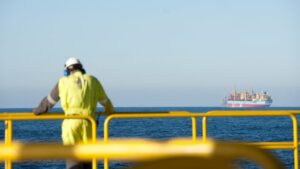Equinor Q2 2021 safety data shows stable number of serious incidents

Equinor’s safety statistics for Q2 2021 indicate a stable trend in serious incidents, but the number of personal injuries has had a negative development. There was also one hydrocarbon leak in this period.
“We take it seriously that the number of personal injuries is developing in the wrong direction,” said Jannicke Nilsson, Executive VP for Safety, Security and Sustainability (SSU). “Nobody must be injured while working for us. In addition, we do not see any improvement in the number of serious incidents. Consequently, we keep focusing on major accidents while working towards turning the personal injury development.”
The 12-month average serious incident frequency, SIF (number of serious incidents per million hours worked), is 0.5 at the end of June, the same level as was seen at the end of 2020. SIF includes both incidents with an actual serious consequence (injury) and incidents with a serious potential. Nine serious incidents were recorded in Q2 this year, compared with 12 serious incidents in the same period in 2020.
The 12-month average total recordable incident frequency, TRIF (number of personal injuries with medical treatment per million hours worked) is 2.5, compared with 2.3 at the end of 2020. A total of 90 injuries were recorded in Q2, compared with 53 injuries in Q2 2020.
The SIF and TRIF figures are based on 32.9 million working hours in Q2 2021, compared with 29.6 million working hours in Q2 2020.
Four hydrocarbon leaks (oil and gas leaks with a leak rate exceeding 0.1kg/second) have been recorded so far this year. One gas leak has been recorded in Q2, and no serious well incidents.
Safety, Security and Sustainability was established as a new functional area when Equinor’s organizational change was implemented on 1 June. This was done to strengthen the safety work and ensure a holistic perspective by working toward preventing harm to people, the environment and the communities of which Equinor is part.
“We are learning from others, and we are learning together with others,” Ms Nilsson said. “A common understanding of the risk picture is key, both internally in a big company and in our collaboration with other people. Sharing safety results and experience is a central part of this work, as well as close dialogue with authorities and employee representatives.”
That is also the background for the industrial collaboration with other operators and suppliers. The purpose of the collaboration is to strengthen the industry’s safety culture to avoid injuries, undesirable incidents and major accidents.
One example is Equinor’s collaboration with Aker BP and Vår Energi on learning packages for the industry addressing different topics during the year, such as avoiding personal injuries, working safely at height and preventing dropped objects. Another example is the industry’s “life-saving rules,” which is a collaboration between Equinor and suppliers.
“Learning packages and rules are not enough, however. We must ensure that good premises – such as technology, work processes and organizational conditions – are in place to enhance the opportunities for pursuing safe work. This is a way of thinking that we will emphasize even stronger going forward,” Ms Nilsson said.




